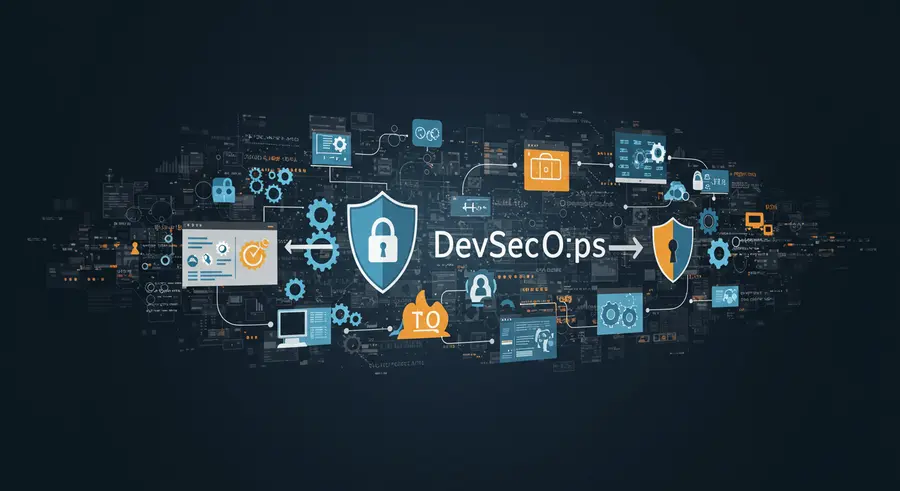Appearance

Welcome, security-conscious developers and operations enthusiasts! 👋 In today's fast-paced digital landscape, the line between development, security, and operations has blurred, giving rise to DevSecOps. It's more than just a buzzword; it's a transformative cultural and technical shift that embeds security into every single stage of the software development lifecycle. No longer an afterthought, security becomes a shared responsibility from idea to deployment and beyond! 🚀
Why DevSecOps? The Imperative for Modern Web Applications
In an era where data breaches are rampant and cyber threats are increasingly sophisticated, merely building features isn't enough. We must build secure features. Traditional security approaches often involve security teams reviewing code late in the cycle, leading to bottlenecks, costly rework, and delayed releases. DevSecOps aims to fix this by:
- Shifting Security Left: Integrating security early in the development pipeline.
- Automating Security Checks: Reducing manual effort and human error.
- Fostering Collaboration: Breaking down silos between Dev, Sec, and Ops teams.
- Ensuring Continuous Monitoring: Proactively identifying and responding to threats in production.
This article will guide you through the essential best practices for implementing a robust DevSecOps strategy, particularly for web applications, ensuring your projects are not just functional, but also resilient and secure.
1. Shift Left: Security from Inception ⬅️
The most fundamental principle of DevSecOps is "shifting left," meaning security considerations are integrated from the very beginning of the Software Development Life Cycle (SDLC) – during design and planning phases, not just before deployment.
- Threat Modeling: Before writing a single line of code, identify potential threats and vulnerabilities. Tools like OWASP Threat Dragon can help visualize potential attack vectors.
- Secure by Design Principles: Incorporate security requirements into your architecture. Think about authentication, authorization, data encryption, and input validation from the outset.
- Developer Training: Equip your development team with secure coding best practices. Knowledge is your first line of defense!
For a broader understanding of integrating security into DevOps, check out our related catalogue entry: DevSecOps: Integrating Security into DevOps
2. Automate Everything Possible 🤖
Automation is the backbone of efficient DevSecOps. Manual security checks are slow, error-prone, and can't keep up with the speed of modern CI/CD pipelines.
- Static Application Security Testing (SAST): Integrate SAST tools (e.g., SonarQube, Checkmarx) into your CI pipeline to analyze source code for vulnerabilities without executing it. This catches issues like SQL injection, XSS, and broken authentication early.
- Dynamic Application Security Testing (DAST): Use DAST tools (e.g., OWASP ZAP, Burp Suite) to test your running web application from the outside, simulating attacks to find vulnerabilities that SAST might miss, such as misconfigurations or runtime errors.
- Software Composition Analysis (SCA): Automatically scan for known vulnerabilities in open-source libraries and third-party components you use (e.g., Snyk, Mend). Given the prevalence of open-source, this is critical!
- Container Security Scanning: If you're using containers (Docker, Kubernetes), scan your images for vulnerabilities before deployment (e.g., Clair, Trivy).
- Infrastructure as Code (IaC) Security Scanners: Tools like Checkov or Terrascan can scan your IaC (Terraform, CloudFormation) for misconfigurations that could lead to security gaps before your infrastructure is even provisioned.
Example: Integrating SAST into a GitLab CI/CD Pipeline
yaml
stages:
- build
- test
- security_scan
- deploy
build_job:
stage: build
script:
- npm install
- npm run build
sast_scan:
stage: security_scan
image: sonarsource/sonar-scanner-cli:latest
script:
- sonar-scanner -Dsonar.projectKey=my-web-app -Dsonar.sources=.
allow_failure: true # Allow pipeline to continue, but notify on failure.Note: In a real-world scenario, you'd configure SonarQube server details and potentially fail the pipeline on critical vulnerabilities.
3. Security as Code: Policy Enforcement 📜
Just like infrastructure, security policies can be codified, version-controlled, and automated. This ensures consistency and makes policy enforcement part of your development workflow.
- Policy-as-Code Tools: Use tools like Open Policy Agent (OPA) to define security policies as code that can be enforced across your entire stack – from API gateways to Kubernetes admission controllers.
- Configuration Management Tools: Ensure secure configurations for servers, databases, and other infrastructure components using tools like Ansible, Puppet, or Chef.
4. Continuous Monitoring and Incident Response vigilant 🚨
DevSecOps doesn't stop at deployment. Continuous monitoring is crucial to detect new threats and vulnerabilities in real-time.
- Log Management & SIEM: Centralize logs from applications, servers, and security tools into a Security Information and Event Management (SIEM) system (e.g., Splunk, ELK Stack, Sumo Logic) for real-time analysis and alerting.
- Runtime Application Self-Protection (RASP): Implement RASP solutions that run with your application, detecting and blocking attacks in real-time.
- Incident Response Plan: Have a clear, well-tested incident response plan. Who does what when a security incident occurs? Automation can also play a role in orchestrating responses.
5. Foster a Culture of Shared Responsibility and Collaboration 🤝
This is arguably the most challenging, yet most important aspect of DevSecOps. Security is everyone's job.
- Cross-Functional Teams: Encourage developers, security engineers, and operations personnel to work closely together from the project's inception.
- Security Champions: Identify and empower "security champions" within development teams who can advocate for and spread security knowledge.
- Regular Communication: Establish regular communication channels for security updates, threat intelligence, and vulnerability discussions.
- Blameless Post-Mortems: When incidents occur, focus on learning and improving processes rather than assigning blame.
Conclusion: Building a Secure Future for Web Applications ✨
Implementing DevSecOps is an ongoing journey, not a destination. It requires continuous effort, adaptation, and a commitment to integrating security deeply into your organizational DNA. By embracing principles like "shift left," automation, security as code, continuous monitoring, and fostering a collaborative culture, you can build more resilient, secure, and trustworthy web applications that stand strong against the ever-evolving threat landscape.
Start small, automate incrementally, and celebrate every secure step forward. Your users and your business will thank you for it!